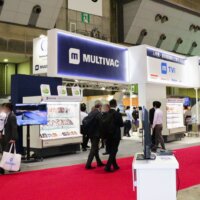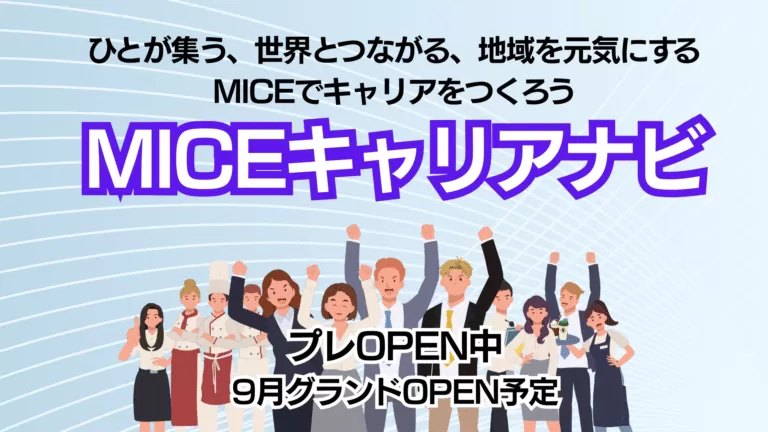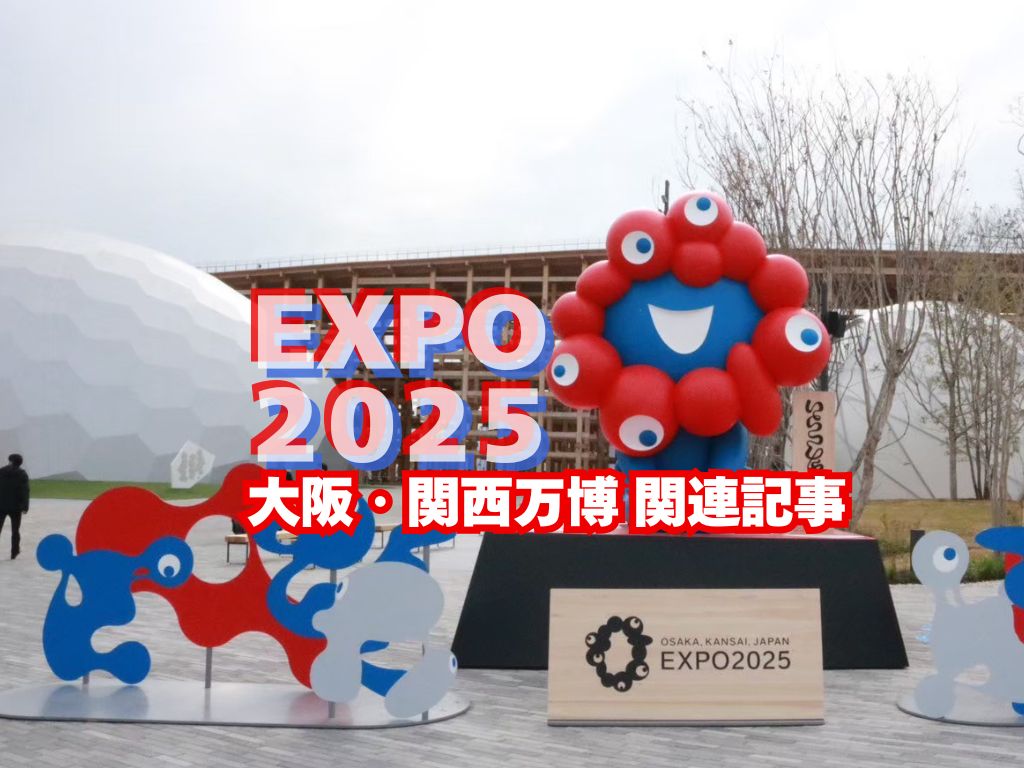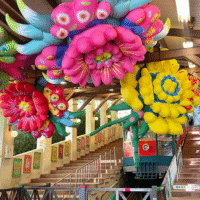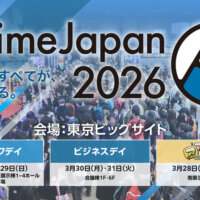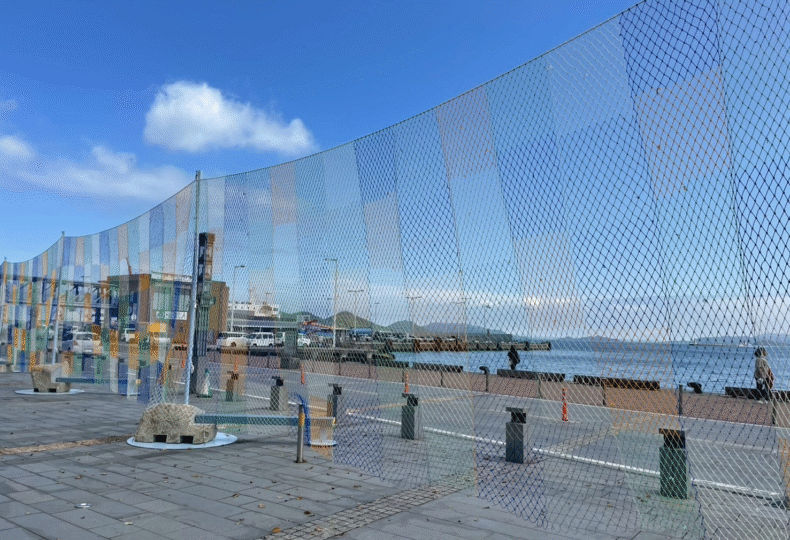
On-the-ground report: A Megijima-based reporter guides you through Setouchi Triennale 2025 — from standout artworks and recommended spots to how islanders live with the festival
A spring breeze blows across the Seto Inland Sea. Twenty minutes by ferry from Takamatsu Port, Megijima greets visitors with a unique mix of contemporary art and a cave tied to the Momotaro legend. The spring session of Setouchi Triennale 2025 has opened. New site-specific installations across the island link everyday life with the sea, inviting experiences where the ordinary meets the extraordinary. This article is written by an editorial staff member who runs a guesthouse on Megijima, offering a local perspective you won’t find elsewhere.
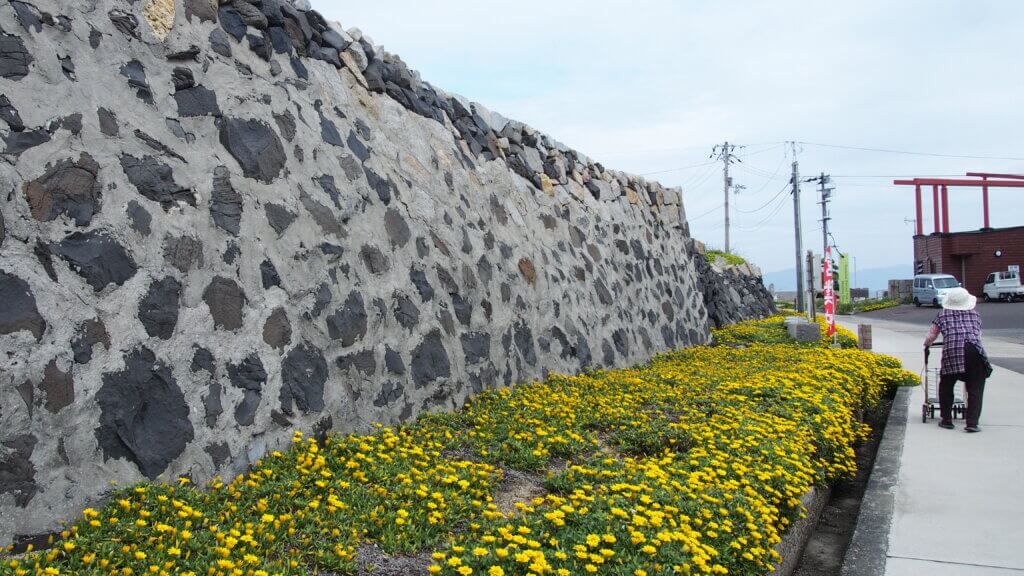
What is the Setouchi Triennale?
The Setouchi Triennale (often called “Setoge” in Japanese) is a world-class contemporary art festival held every three years across 17 island and coastal areas of the Seto Inland Sea. Since its first edition in 2010, this year marks the sixth. Spanning roughly 100 days over the spring, summer, and autumn sessions, the festival presents installations, architecture, and performances that draw on the region’s maritime landscape. Traveling by ferry with a Triennale Passport in hand has brought new exchange and economic activity to depopulating areas, with around one million visitors each edition. The festival’s purpose is to make visible issues faced by the islands—such as depopulation and marine debris—through art, and to encourage residents and visitors to work together on the future of Setouchi.
Setouchi Triennale Official Website https://setouchi-artfest.jp/en/
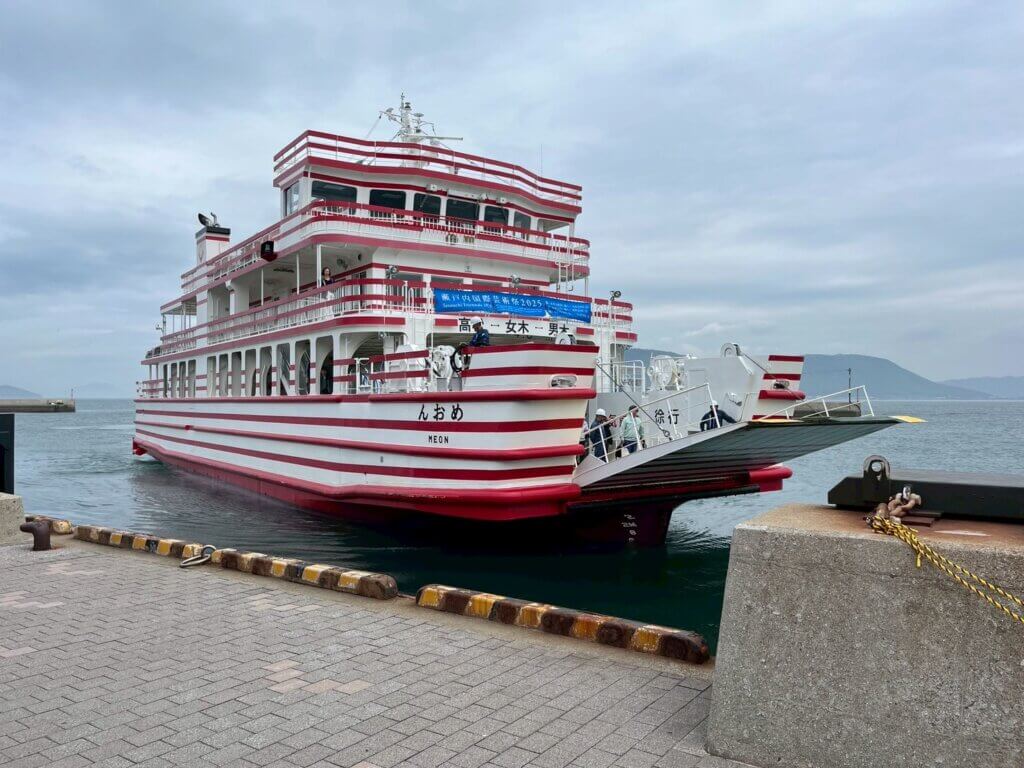
About Megijima — where the Momotaro legend meets contemporary art
Access to Megijima
Megijima lies about 4 km from Takamatsu Port and is just a 20-minute ride on the regular ferry Meon, making it an easy trip. You can reach Takamatsu Station from major cities like Kyoto, Kobe, and Osaka by highway bus; from the Okayama side by JR Marine Liner; and from Kobe there is also a ferry option.
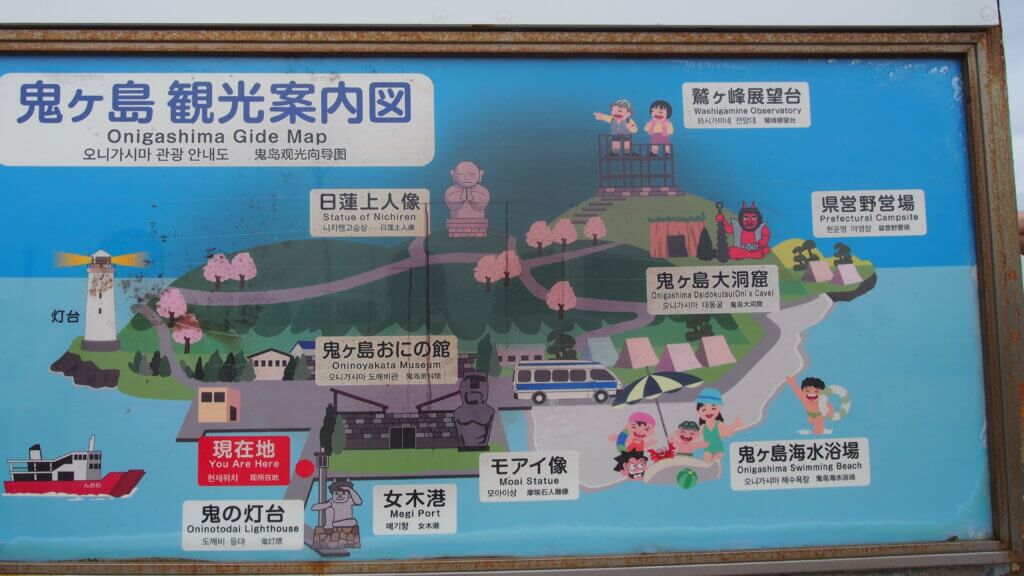
Island at a glance
Long and narrow in shape, the island features an expansive sandy beach. With a rental bicycle, you can loop around in about an hour across its 2.67 km² area.
Highlights
Megijima is also known as Onigashima. Near the summit, a large cave—said to have been the ogres’ lair—can be explored. Down by the shore, the long beach offers stand-up paddleboarding and tent-sauna services, so you can enjoy a range of marine activities.
About the writer — a Megijima resident
Hello, I’m Mekada, the writer of this article and a resident of Megijima. I moved here after falling in love with the island’s beautiful beach, and I’m now in my sixth year on the island. This is my third Setouchi Triennale. I’m also busy raising my children here. I run an ocean-view café and guesthouse along the beach.
A beachside café for island time with pizza and sea views
Enjoy freshly baked pizza while gazing at the beach—slow down and savor “island time” at this ocean-view café.
Megijima Guesthouse & Café Megino — Website: https://megijima-megino.com/
Café hours: 11:00–15:00
Closed: Thursdays (plus occasional irregular closures)
Please check Instagram for current opening days.
Guesthouse accommodation is also available (7 beds).
Let’s explore Megijima’s artworks
Overview of the Megijima works
Most artworks are clustered in the Higashiura area and can be reached on foot from Megijima Port. The one exception is this year’s new mural inside Onigashima Cave: Generative wall drawing for Megijima Onigashima Great Cave Mural. To get there, go uphill by cave shuttle bus (about 10 minutes one way), by bicycle (about 25 minutes), or on foot (about 40 minutes). All other sites are on level ground within walking distance.
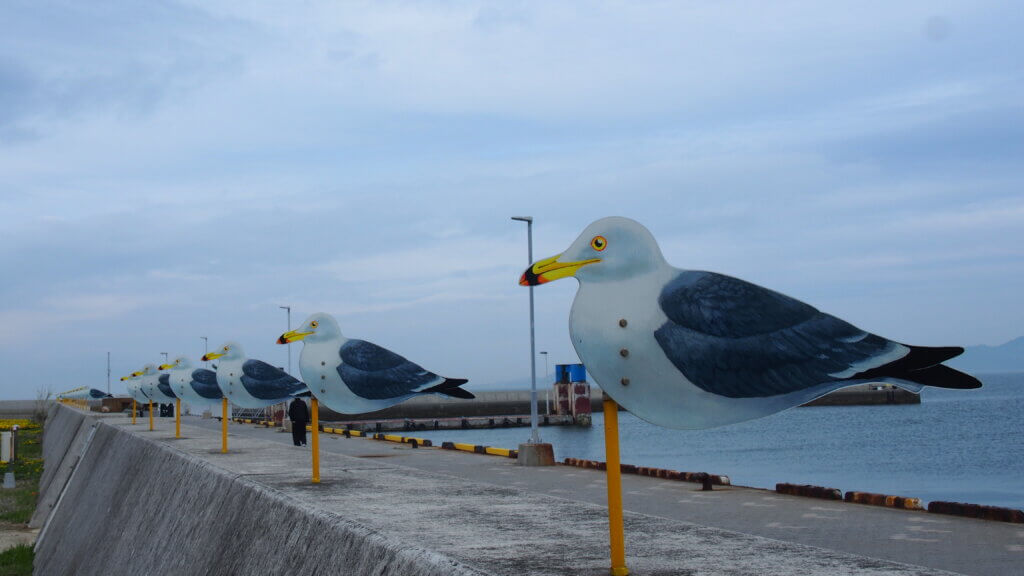
Outdoor highlights include Sea Gulls Parking Lot, 20th Century Recall, and Terrace Winds. Returning works from previous editions include The Presence of Absence, MECON (at Megijima Elementary School), and Navigation Room (first shown in 2022). Two evolving projects are ISLAND THEATRE MEGI and KONBO-YA.
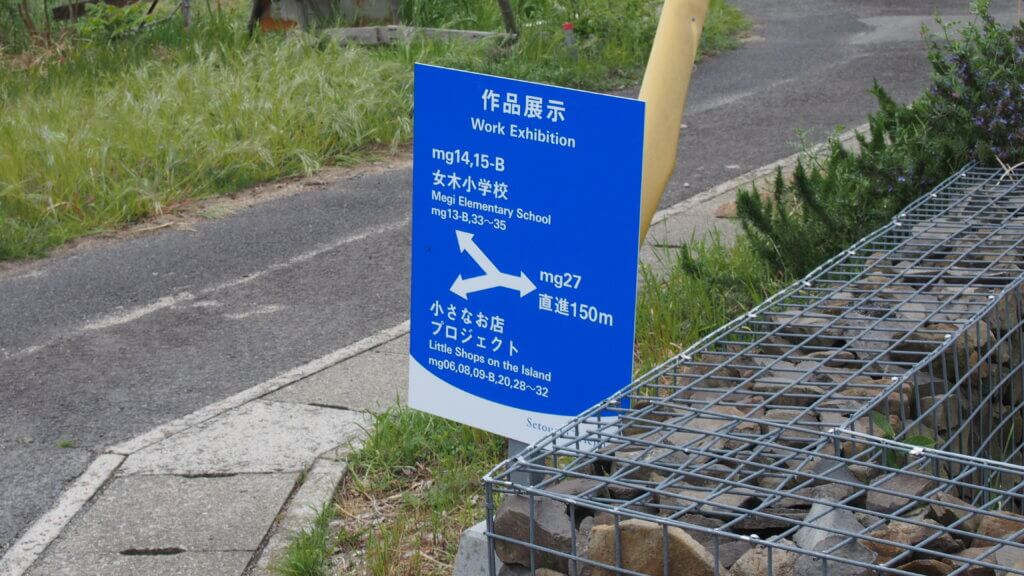
For 2025, new additions within the “Little Shops on the Island” project include:
Mekochan : Old School Bookstore, Poetry of Life・Ama no oto, SUNSET TAILOR Memory-Inspired Fashion, Yoga Class – Meditating Swing, Rolling Scenery, Café “Something Signs”, and Glass fisherman. Longtime favorites in the same project include Hair Salon Kotobuki, Ping-Pong Sea, and Laundry. You’ll also find school-based presentations such as Megijima Population Growth Plan: new ANAGUMACHI residents wanted! and (in the autumn session) Magnetic Fields.
Featured participatory works on Megijima
Ping-Pong Sea NEW! — Rintaro Hara + Yu Hara
Launched in 2019, the ping-pong space returns in a renewed form for 2025. You can play while pondering playful prompts, and try a hybrid table inspired by air hockey and ping-pong. Balls and paddles are available for rent at the reception.
Mekochan : Old School Bookstore — The Cabin Company
This work was inspired by conversations with the island’s only current elementary school girl. The artist duo—both picture-book authors and contemporary artists—created a large figure of a schoolgirl with a satchel. What is she gazing at? Behind her are books once housed in the library of Megijima Elementary School, which is currently closed. The caption says it was made as a “hymn to the new buds sprouting in a place of declining population.” Since the Triennale began, the girl who inspired the work has been visiting Mekochan every day.
Glass fisherman — Kentaro Yanagi
A fishing-tackle shop for “catching dreams from the air,” run by an artist who is both a glassmaker and a fisherman. You can purchase glass lures and accessories, and glass workshops are planned during the festival. In 2022, I tried making a glass muddler there—the hardest part was positioning the material in the flame. That hands-on struggle helped me appreciate just how intricate the tiny components in Yanagi’s exhibited works really are.
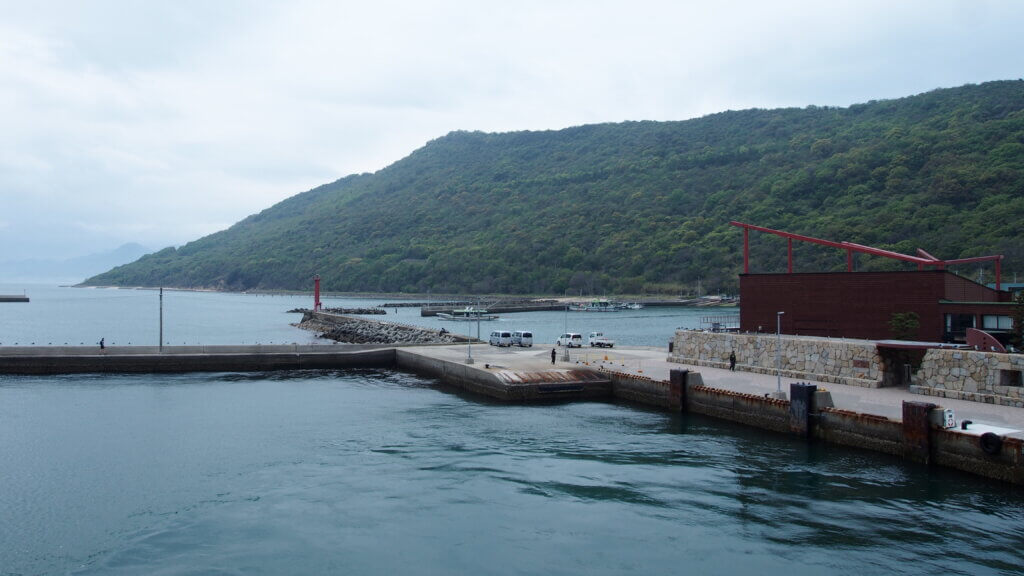
How islanders relate to the festival
Because the Setouchi Triennale brings many visitors from Japan and abroad every three years, it’s a welcome opportunity for people working in tourism—guesthouse owners, restaurant operators, and others. At my own guesthouse, we stay fully booked throughout the festival period.
Even in years without the festival, we often hear from guests who first discovered Megijima through the Triennale: They loved the island but were too busy visiting artworks to slow down, so they came back later to relax. It shows how the festival’s drawing power extends beyond the festival year itself.
As part of the Takamatsu Port Project, a giant fishing net titled Sora-Ami has been installed, woven by 252 fishers and local residents from four islands—Megijima, Teshima, Ogijima, and Shodoshima.
Megijima’s population is aging, with an average age around 70. Many residents are retirees, so not everyone feels the benefits of the Triennale directly. Some say the ferries get crowded when the festival starts. And yet, people join resident-only workshops and come together on the pre-open day to see what’s new. You can feel the community’s curiosity and love of fun.
Before this year’s opening, the island hosted a resident workshop to knit Sora-Ami led by artist Yasuaki Igarashi. Even fishers who don’t usually show an interest in art took part, moving their hands at an impressive pace. At one point the artist suggested taking a break, but everyone was so absorbed that they just kept weaving.
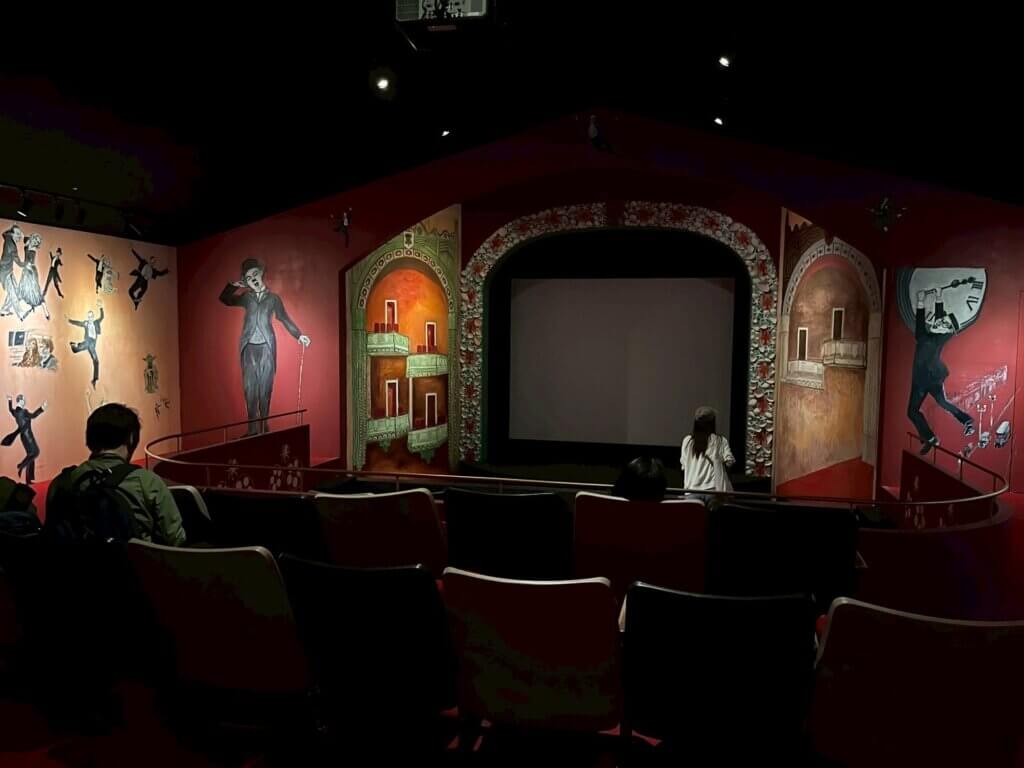
In closing — Explore art on an island, and come to Megijima
We’ve introduced Megijima, one of the venues of the lively spring session of the Setouchi Triennale. Whether you add a bit of art to a broader travel plan or make it the main purpose of your trip, Megijima is easy to reach, offers many new works in 2025, and has exhibitions throughout spring, summer, and autumn—making it a must-visit. Art experiences woven into the island’s quiet everyday life will help you unwind. Take this opportunity to visit Megijima, a small island just 20 minutes from Takamatsu. We look forward to welcoming you!
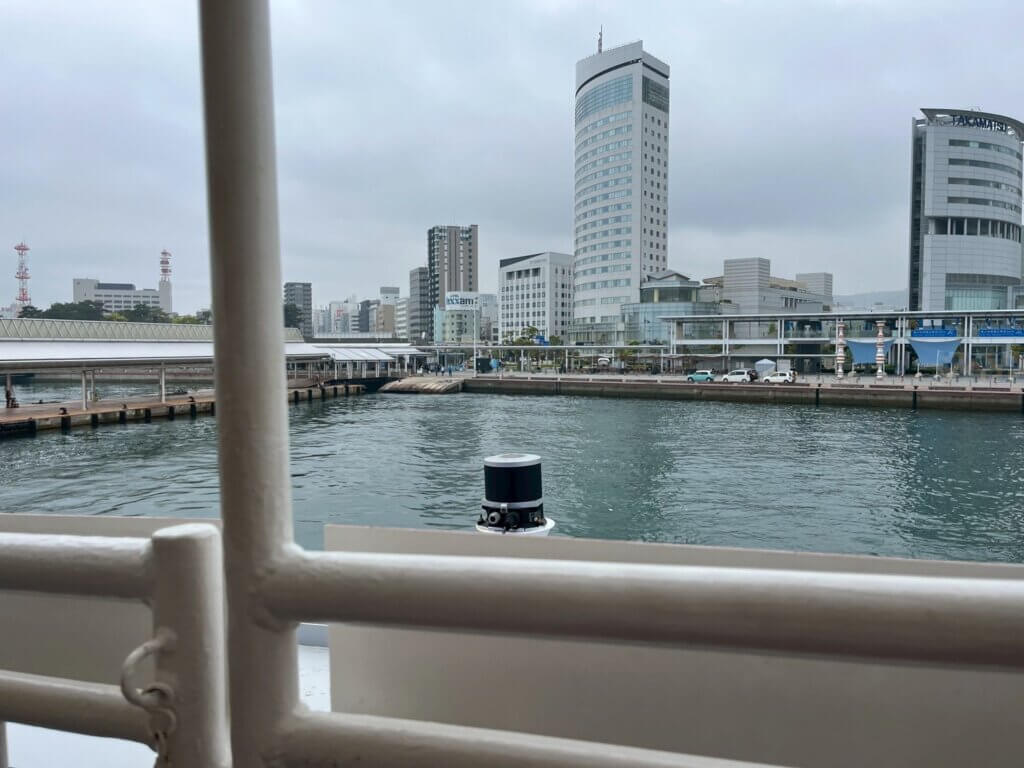
Setouchi Triennale — Overview
The Setouchi Triennale is an international art festival held every three years across the Seto Inland Sea. It began in 2010, and 2025 marks its sixth edition. The number of works and participating areas has grown year by year.
Official Website: https://setouchi-artfest.jp/
Festival periods (three sessions)
Spring: Apr 18 (Fri) – May 25 (Sun) — 38 days
Summer: Aug 1 (Fri) – Aug 31 (Sun) — 31 days
Autumn: Oct 3 (Fri) – Nov 9 (Sun) — 38 days
Note: Individual venues have regular closed days.
For example, on Naoshima the Art House Project and the Chichu Art Museum are closed on Mondays, while Teshima is closed on Tuesdays. Some Megijima exhibits close on Wednesdays. Please check the official artworks schedule before you go.
Artworks Calendar: https://setouchi-artfest.jp/artworks-calendar/
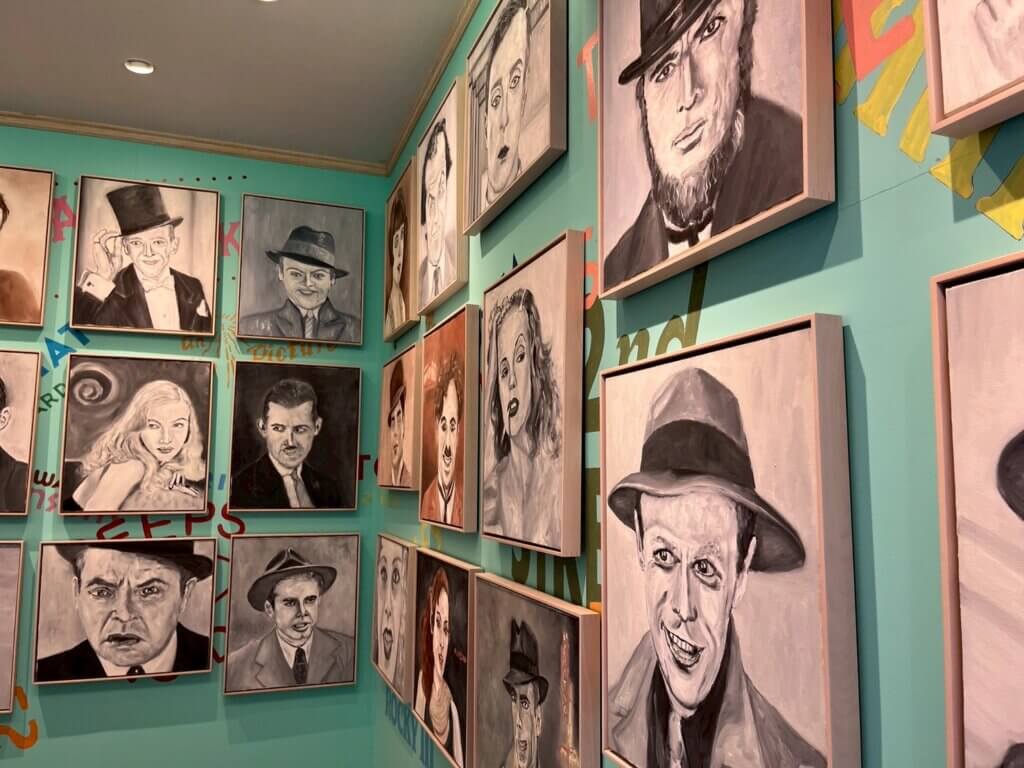
Venues (17 areas across islands and coastal regions)
All sessions: Naoshima / Teshima / Megijima / Ogijima / Shodoshima / Oshima / Inujima / Takamatsu Port Area / Uno Port Area
Spring session: Seto Ohashi Bridge Area
Summer session: Shido–Tsuda Area / Hiketa Area
Autumn session: Utazu Area / Honjima / Takamijima / Awashima / Ibukijima
A notable development this year is the participation of towns beyond Takamatsu in Kagawa Prefecture—Shido, Tsuda, Hiketa, and Utazu—aimed at revitalizing local industries, alongside the traditional island venues.
How to visit / Tickets
If you plan to explore multiple areas across all three sessions, the All-Season Passport offers the best value. If you’re adding a short visit to your trip, consider a Single-Season Passport or purchase individual tickets at each facility.
- Triennale Passport
All-Season Passport: Adults ¥5,500 / Ages 16–18 ¥2,500
Single-Season Passport (valid for one of Spring/Summer/Autumn): ¥4,500 - Individual admission tickets: Typically ¥500–¥1,000 per facility (varies)
Children 15 and under are admitted free (with some exceptions such as the Chichu Art Museum). “Kodomo Passport” stamp rally booklets are distributed free of charge at festival information desks to help kids enjoy the artworks.
-
Board Game Business Expo Japan 2025 (BGBE 2025) — Exploring the Boundless Business Potential of Modern Board Games
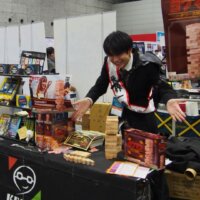
-
FOOMA JAPAN 2025 Report — A Vibrant Show Floor and Bold Moves by Long-Established Manufacturers and Startups
